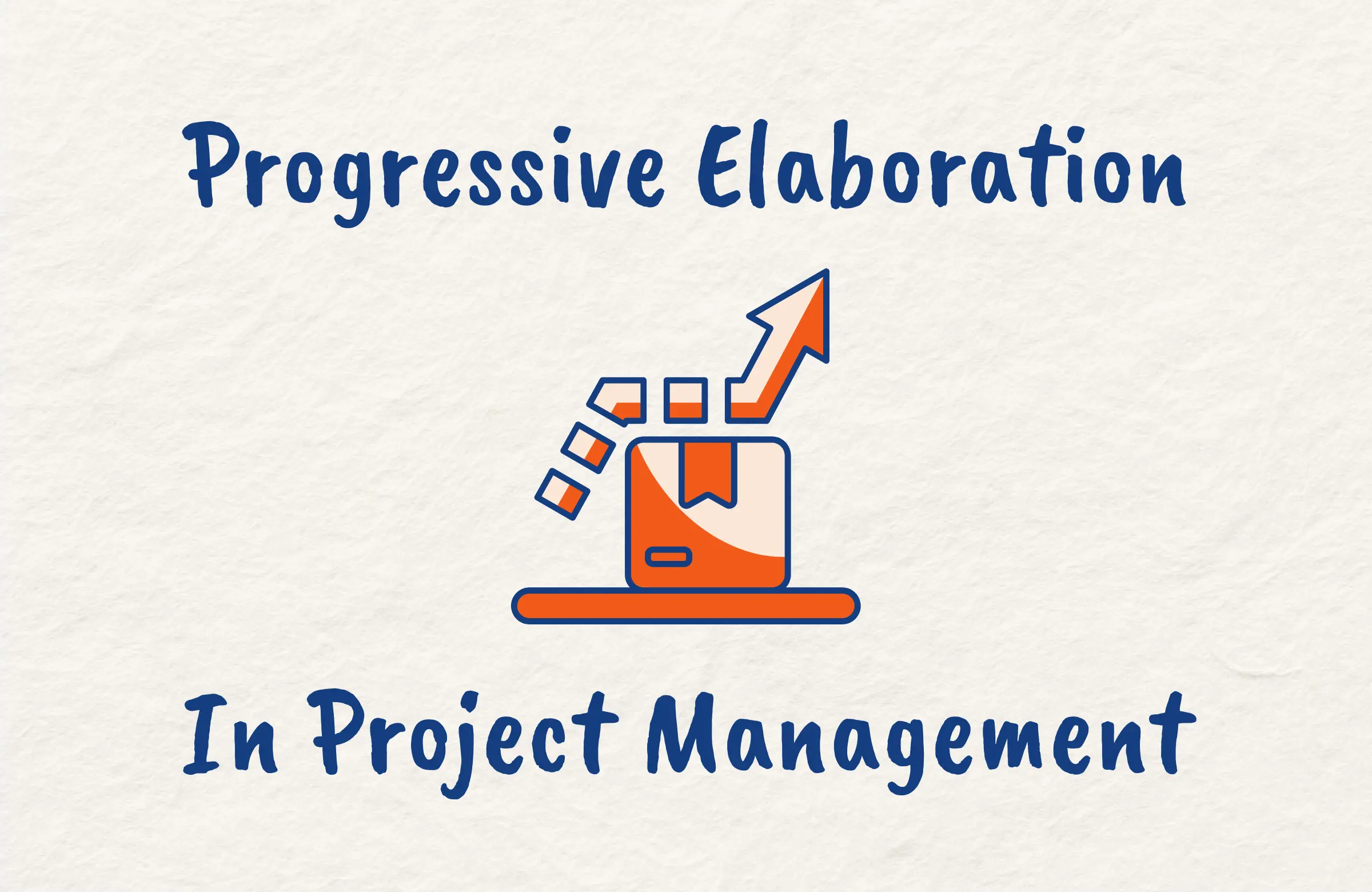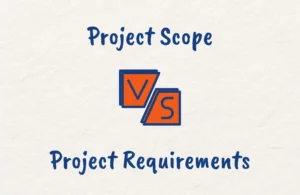For most of the projects that you’ll get to manage, you won’t have every project detail defined upfront. However, you still have to plan and manage these projects. One essential technique used for managing projects with unclear requirements is progressive elaboration.
Using this technique allows you to start with high-level planning and continuously improve the project plan as more information becomes available. With this approach, you can accommodate changes, gather feedback, and reduce risk.
In this post, we’ll explore the purpose, and benefits of progressive elaboration and how it compares to related concepts like rolling wave planning as well as examples to provide you with some clarity. You’ll also learn PMP exam tips for tackling questions on this technique as you can expect some in the exam.
What is Progressive Elaboration in Project Management?
Progressive elaboration is an iterative approach for developing and refining a project management plan throughout the project lifecycle.
Since many project details are unknown at the start, you begin with high-level planning and basic requirements. As the project progresses and you gain clarity, you continuously improve the plan by adding details and specifications.
Progressive elaboration allows you to start project work early, even when you don’t have full requirements. This way you can avoid analysis paralysis and waste from overly detailed upfront planning.
The key is to start with a precise and accurate foundational plan. Then, elaborate on the details through an iterative process as you learn more. With each iteration, the project plan improves and becomes more comprehensive.
Purpose of Progressive Elaboration
The main purpose of progressive elaboration is to allow you to start and execute project work without having full requirements or details upfront.
It provides a framework to begin with an initial plan and fill in details through iterative cycles as the project progresses.
Progressive elaboration enables you to avoid delays from trying to define all project details at the start. You can start work with a high-level plan and allow the scope and schedule to evolve over time. It supports agility and the ability to respond to change.
This approach also helps you break down a large project into smaller, more manageable pieces. You can focus resources on immediate work rather than planning the whole project upfront.
Through progressive learning, you will gain clarity on requirements and can refine deliverables, processes, and resources.
The purpose is to balance planning with execution and accommodate new information when running projects with uncertainty.
Benefits of Progressive Elaboration
Progressive elaboration offers several advantages for managing projects effectively:
Provides Flexibility
You can incorporate new information and modify plans without major delays. This agile approach supports responding to change requests and emergent needs.
Reduces Wasted Effort
Avoiding strict upfront planning prevents wasted work from over-engineering. You only detail the activities needed for the next iteration.
Enables Early Issue Detection
Working in small iterations allows you to identify problems sooner rather than later in the project lifecycle. You can then course correct quickly.
Facilitates Stakeholder Collaboration
Gathering regular feedback from stakeholders on deliverables during each cycle keeps them engaged which leads to greater buy-in.
Lowers Project Risk
Gaining visibility into upcoming work allows you to adapt to challenges and reduce uncertainties that can derail projects.
Leads to Accurate Requirements
Stakeholder engagement and feedback during iterations help clarify vague requirements progressively.
Improves Resource Allocation
You can assign resources in a just-in-time manner as needs emerge rather than pre-assigning for the entire project duration.
Increases Team Morale
Empowering teams to meet emergent needs rather than locking them into rigid plans improves engagement and morale.
Promotes Continuous Improvement
Each iteration provides lessons learned to refine processes, resources, requirements, and deliverables for optimization.
Delivers Value Faster
Starting work earlier with a minimum viable product allows you to deliver incremental value without full details.
Progressive Elaboration Agile
Progressive elaboration is a natural fit for Agile methodologies since it aligns with core Agile values like responding to change and delivering working software frequently.
In Agile projects, you take an iterative approach to refine the product incrementally based on regular stakeholder feedback. Requirements are developed progressively over multiple iterations versus defining everything upfront.
Agile ceremonies like Sprint Planning meetings, Daily Standups, and Retrospectives support progressive elaboration. The team continually inspects and adapts the product and processes based on lessons learned.
The Product Backlog is a key artifact that is progressively elaborated. The Product Owner prioritizes and grooms the backlog by adding details over multiple Sprints.
Agile’s incremental delivery model allows you to release working software early and iterate based on user feedback. This progressive learning and refinement is core to Agile.
Overall, Agile provides the right cadence and mindset to leverage progressive elaboration. Features start at high-level user stories and get elaborated into tasks over time. By embracing change, Agile enables continuous improvement driven by progressive learning.
Progressive Elaboration Example
Let’s look at an example for a new product development project:
The overall goal is to design a new handheld mobile device. Initial requirements are high-level: 5-inch touchscreen display, WiFi/cellular connectivity, mobile OS, 12MP camera, etc.
The team starts by building a basic prototype to validate core functionality and get user feedback. This MVP focuses on essential features only.
Based on lessons learned, the team continues iterating. They prioritize new user stories to add capabilities like image stabilization and expand to new colors. The product owner grooms the backlog by elaborating user stories with more details.
As Sprints progress, the developers refine the architecture, engineers improve the camera and battery life, and designers evolve the UI/UX.
Each Sprint Review provides an opportunity to demo the latest increment and adjust based on stakeholder feedback. The retrospective focuses on process improvements.
By working in iterations, the team can incorporate progressive learning to improve the product, and the project plan also gets more detailed over time.
This example demonstrates how progressive elaboration allows the product to evolve iteratively until the final release.
Progressive Elaboration vs Rolling Wave Planning
Progressive elaboration is the overall technique of continuously elaborating on project plans over multiple iterations. Rolling wave planning is a more specific form of progressive elaboration.
In rolling wave planning, you break the project into phases and plan each phase at different levels of detail depending on the time horizon. Near-term phases are planned in granular detail while long-term phases are only loosely planned.
As you move through the project, you convert the loose plans for future phases into detailed plans. In other words, you start with high-level plans for Phase 2 and 3 while developing detailed plans for the current Phase 1.
Rolling wave planning is useful when requirements are unclear beyond a short time horizon. It is an implementation of progressive elaboration focused on phased planning.
Overall, progressive elaboration is the broader methodology while rolling wave is a specific technique under it. They both allow the incorporation of emergent information into an evolving project plan.
Progressive Elaboration vs Scope Creep
Progressive elaboration and scope creep are two distinct concepts in project management.
Progressive elaboration refers to the intentional process of continuously elaborating and refining the project scope and plan through iterative cycles. It is a controlled process to incorporate emergent information.
In contrast, scope creep refers to uncontrolled changes in project scope without adjustments to time, cost, and resources which leads to projects gradually growing in scope without the approval of stakeholders.
While progressive elaboration embraces changes through systematic refinement, scope creep implies unmanaged changes that distort the project objectives.
With progressive elaboration, changes are incorporated intentionally through mechanisms like a change control process. Scope creep tends to happen inadvertently without formal change approval.
Progressive elaboration improves the accuracy of project plans while scope creep distorts plans. The controlled iterations lead to greater clarity on the project scope and requirements.
In essence, progressive elaboration is a proactive technique to manage changes and uncertainty. Scope creep indicates a lack of proper change and scope management.
Controlling scope creep starts with having a defined scope change process and monitoring mechanism to prevent uncontrolled expansion in project scope.
Progressive Elaboration PMP Exam Tips
Understanding progressive elaboration is key for PMP exam success. Here are some tips:
- Know the techniques like rolling wave planning and prototyping that enable the iterative elaboration of plans over time rather than full upfront detailing.
- Be able to explain the purpose and benefits of progressive elaboration, such as managing uncertainty, enabling feedback, and promoting agility.
- Recognize how progressive elaboration allows starting with the big picture and filling in specifics progressively. This avoids over-planning upfront.
- Relate progressive elaboration to agile methodologies which embrace change and enable continuous stakeholder collaboration for requirement gathering.
- For PMP exam situational questions, look for opportunities to refine plans iteratively and defer detailed planning where requirements are unclear. Consider suggesting prototyping to validate designs.
- Know the tradeoffs – progressive elaboration requires strong change control and may increase total planning effort across multiple cycles. But it reduces waste and risk.
- Contrast progressive elaboration with rigidly following the original plan. Inflexibility leads to misalignment with evolving needs.
- Link progressive elaboration to continuous improvement of plans and designs based on feedback. This ties to the quality management knowledge area.
When you see a scenario with high uncertainty, dynamic requirements, or frequent changes, consider how progressive elaboration principles could help the project manager adapt and refine plans iteratively. This agile-style approach is well-suited to many modern projects.
Conclusion
Progressive elaboration enables you to balance planning and execution when dealing with uncertainty in project requirements.
By starting with high-level plans and continuously improving through iterations, you can incorporate new learnings as they emerge. This agile, flexible approach allows you to deliver value incrementally and adapt to change.
With practice, you can leverage progressive elaboration to drive quality outcomes, even when you lack complete project details at the outset.





